
Portage trails within the Boundary Waters Canoe Area Wilderness (BWCAW) are minimally maintained in keeping with the wilderness ethic. However, the USFS – Superior National Forest performs annual maintenance. This year, they face significant challenges due to higher-than-average rainfall. By the end of June, some northern towns had received over 7 inches of rainfall in just 24 hours. The heavy rain washed out parts of the portage trails and obliterated sections of roads leading to canoe entry points. As a result, the Forest Service commented on plans to tackle the changing conditions and repair the storm damage.
June was fifth-wettest month on record
The MN DNR reports that June 2024 was the fourth-wettest June and the fifth-wettest month on record in Minnesota. Wet conditions began in March and persisted through June, with heavy rainfall particularly affecting the middle to end of the month. Thus, some portage trails turned into creeks, eroding banks and washing away soil. Boulders and rocks covered sections of the trail, creating precarious obstacles for those hauling canoes and gear between lakes. By the end of June, the Duluth climate recording station had reported 7.72 inches of total rainfall for the month.
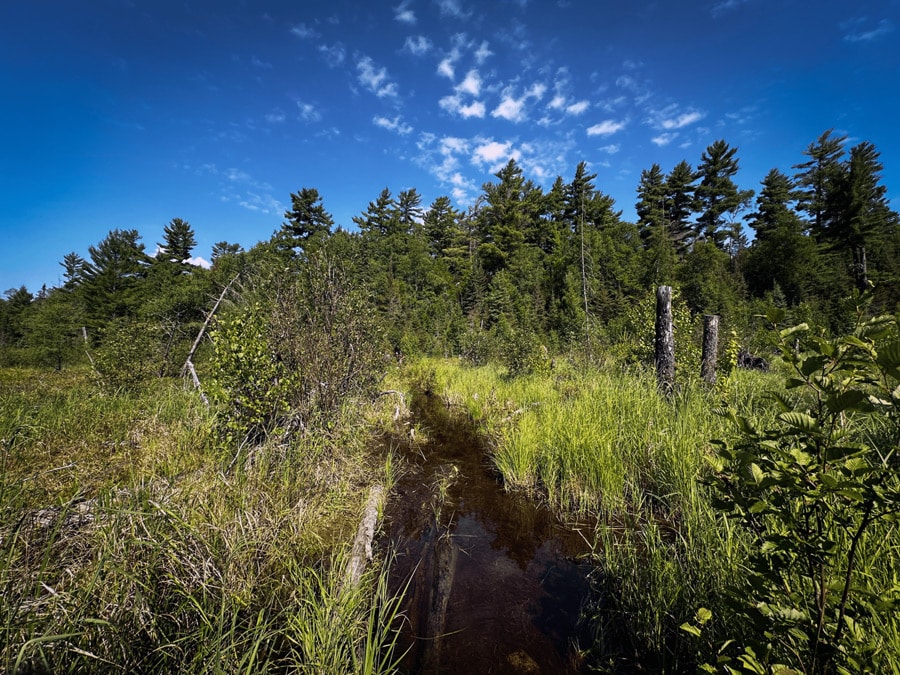
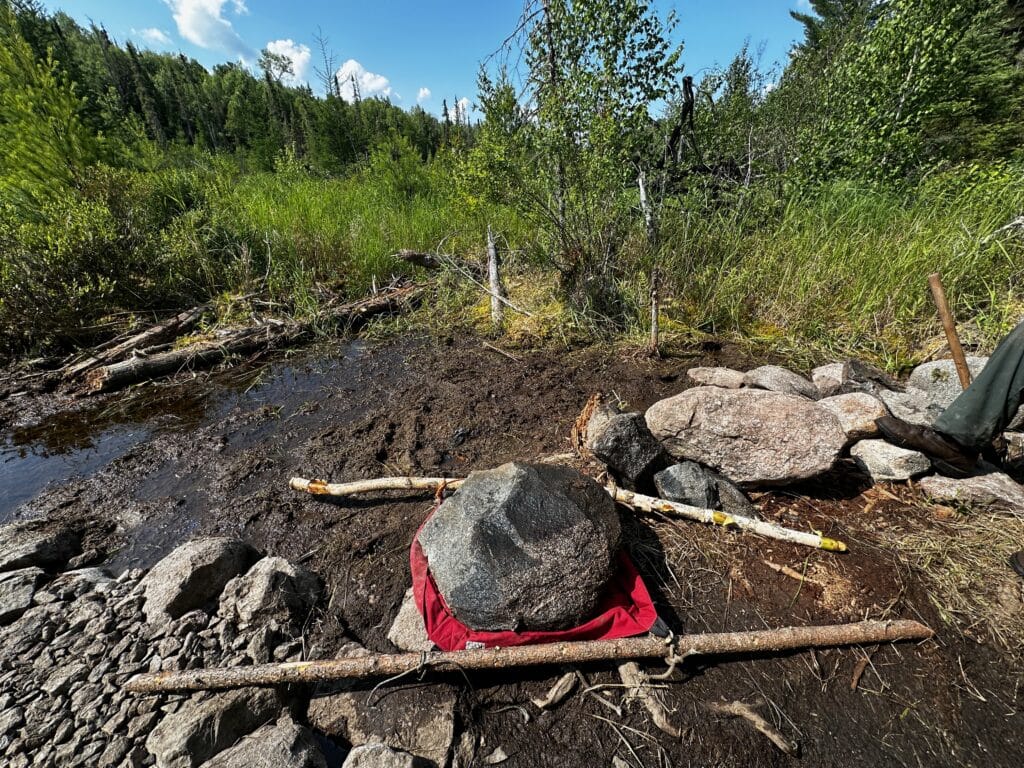
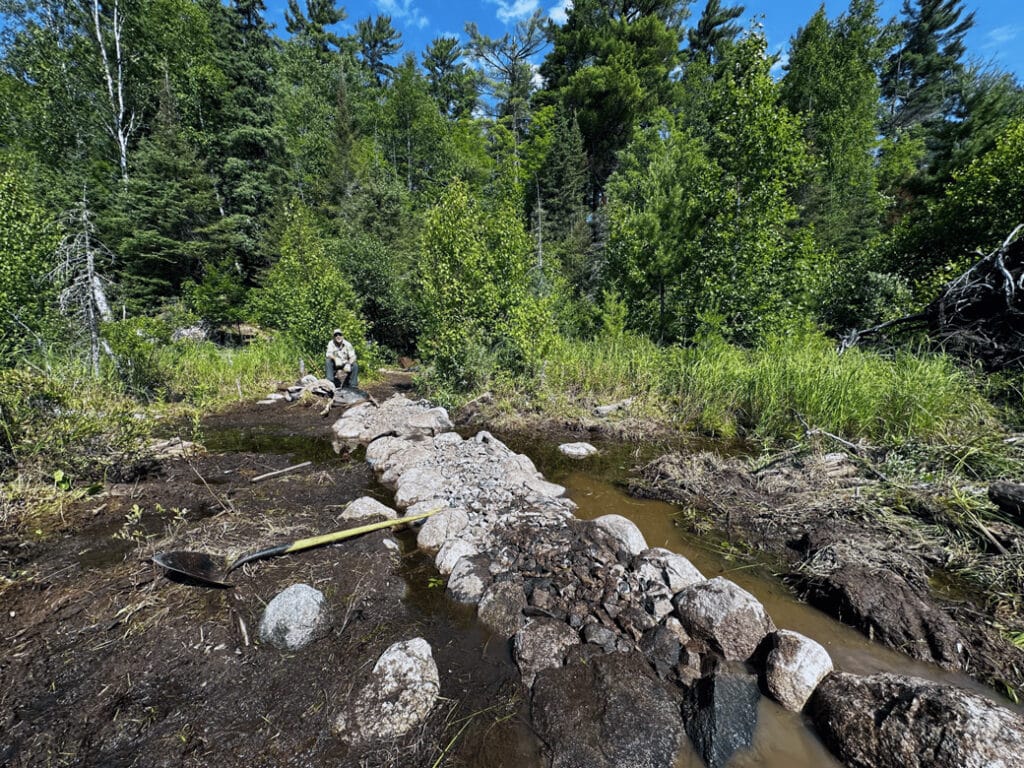
Portage trail work
In July, we met a USFS portage clearing crew on the trail between Hustler and Oyster Lakes in the BWCAW. They used primitive methods to build a rockway in an area with persistent water. This construction would enable trail users to bypass crossing calf-deep water and muck. Two men worked on the project and mentioned that a scout group would soon help complete the work. Using only a couple of sticks and a heavy canvas sling, they moved rocks inch by inch until they created a solid path. They set up camp on a nearby lake and canoed to the worksite each day, using hand tools to work through all weather and varying conditions.
Cathy Quinn, the Assistant Wilderness Program Manager for the USFS – Superior National Forest, emphasized that the Forest Service prioritizes visitor health and safety when working on portage trails and campsites. She said they might focus on digging new latrines before addressing trail repairs. “If trails are passable, they may not get around to fixing washed-out trails for some time,” she explained. The Forest Service prioritizes the most urgent needs first. During the June storms, they concentrated on repairing roads affecting entry points so visitors could exit the wilderness. Road work is still being completed in some areas.
Maintainence is done by hand
People have used wilderness trails for ages. Some of these trails were established long ago, while others originated from logging. The Civilian Conservation Corps or the USFS built some trails as well. Regardless of their origins, many of these trails are very old.
According to the USFS, the BWCAW has roughly 175 miles of portage trails. Wilderness paddler Mark Zimmer estimates about 1000 maintained portage trails. He spent the summers between 2021 and 2023 completing every one of them.
At any given time, roughly thirty USFS staff members work in the BWCAW. Work is done by hand. They carry tools such as shovels, cross-cut saws, and rock slings to check campsites and restore or clear portages. Their tasks include digging new latrines, removing deadfall, cutting brush, and updating existing trails.
The Forest Service carefully considers maintenance decisions to align with wilderness values. Quinn explains, “When we talk about wilderness management, speed is not a factor in routine work.” She adds, “It’s a counter-intuitive mindset to what most people think. Remember, everything is done by hand.” Due to understaffing, Quinn notes that the staff has decreased their efforts on rehabbing campsites and portage trails. However, she mentions that the majority of the work takes place from April through September.
Partnerships in trail preservation
Cathy Quinn also highlights the importance and value of volunteer groups in maintaining wilderness trails. Partnerships with scouting groups, environmental advocacy groups, and trail chapter groups help keep many portage and hiking trails in good shape.
Big events, like the June storms, challenge the Forest Service. Storms erode portage trails, leaving behind a path of ankle-busting rocks and boulders. To address this, crews shovel dirt and gravel back into areas where soil has washed away and build strategic ditches to prevent future washouts.
Finally, she adds that the USFS appreciates visitors alerting them to maintenance issues. Visitors can provide the most current information on portage and campsite conditions. She recommends that people contact one of the local district stations when reporting this information.
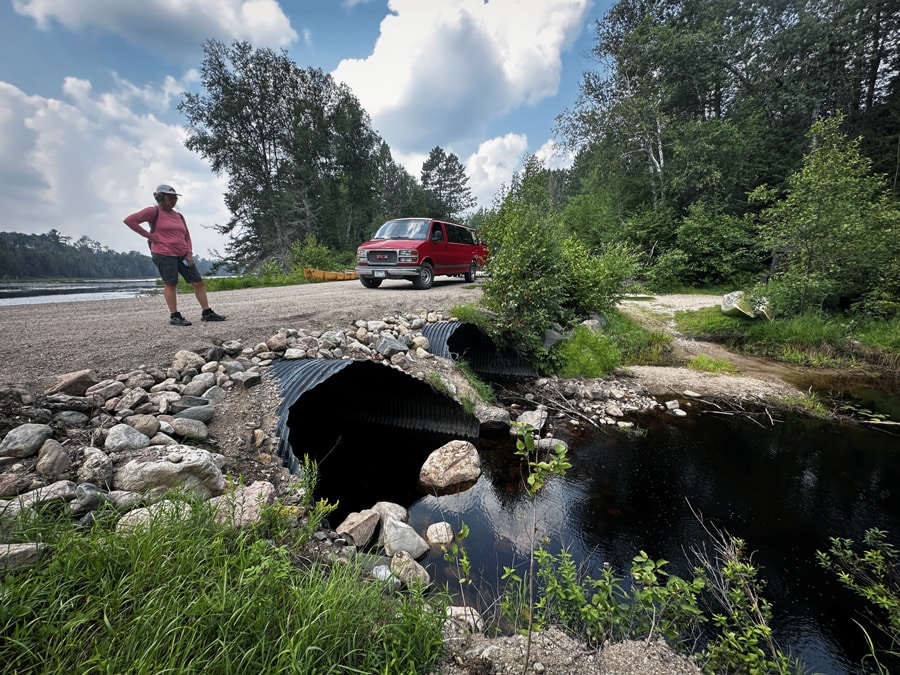
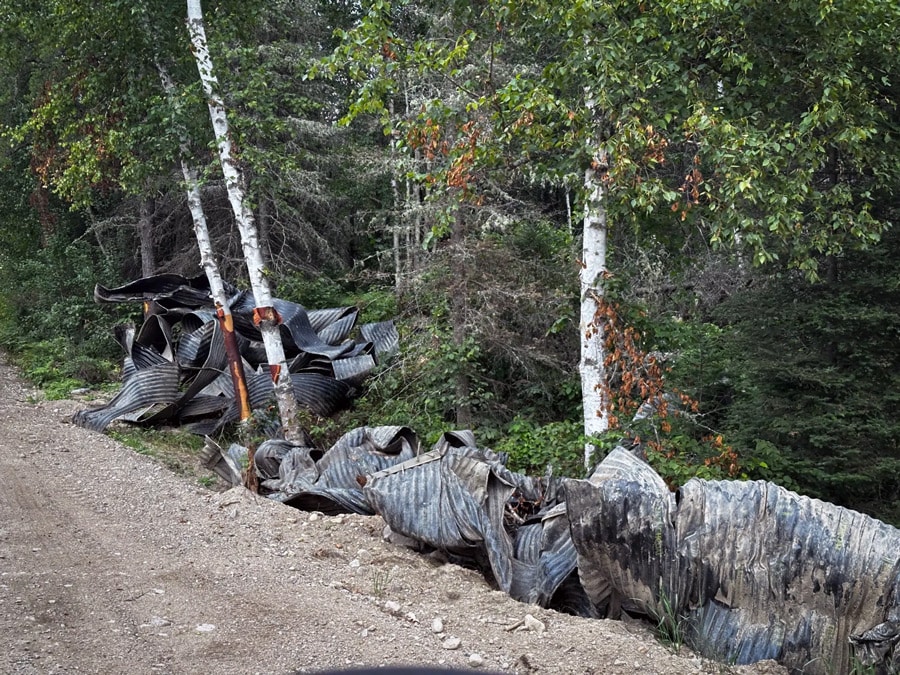
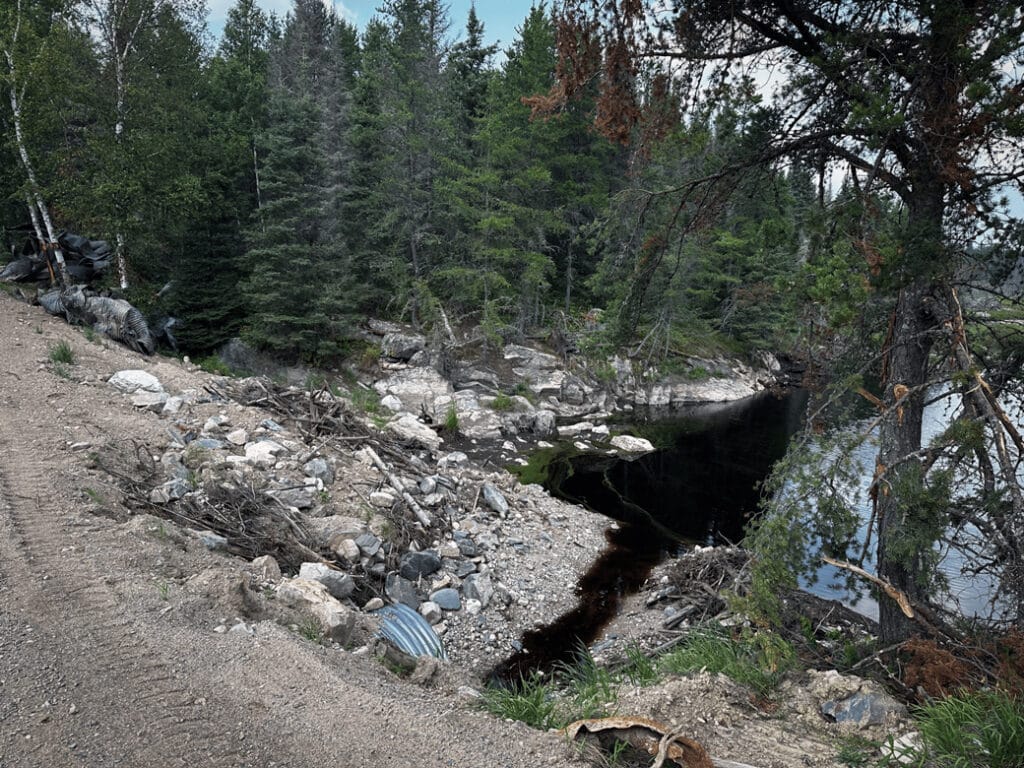
Current road closures
As of August 7th, sixteen roads are still closed due to damage from the June 18 storm. Throughout June and into July, the Forest Service issued numerous emergency closure orders for areas affected by the storms across the 3 million-acre wilderness.
- The LaCroix Ranger District reopened FR 203H (Elephant Lake Spur H) and FR 487A (Gold Mine Impoundment Road).
- The Laurentian Ranger District reopened FR 247 (Big Rice Lake Rd), FR 256 (Hulm/Pfeiffer Lake Road), FR 273 (Bates Road), FR 278 (Dewey Lake Rd), and FR 279 (Shannon Lake Road).
- The Kawishiwi Ranger District reopened FR 1027 (Big Lake Boat Access).
- The Tofte Ranger District reopened FR 377 (Tomahawk Rd) and FR 172 (Wanless Rd).
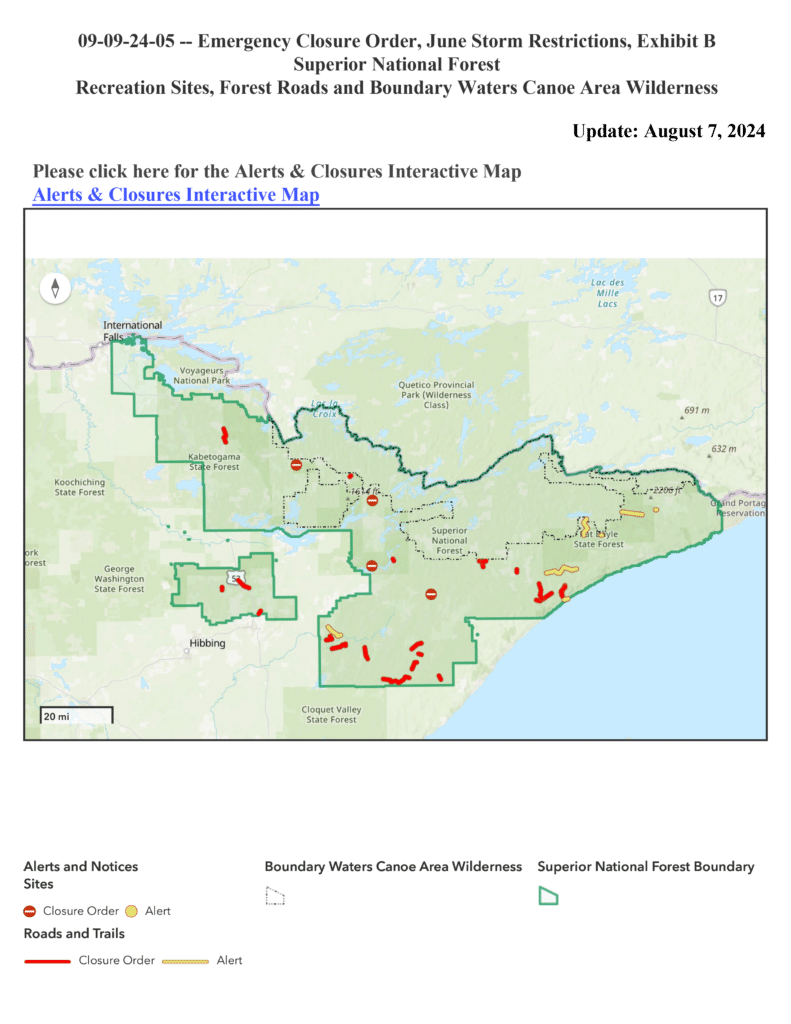
More info:
- Superior National Forest Storm Damage Update – August 7, 2024 – USFS
- Entry Points Closed due to Storm Damage

Wilderness guide and outdoorswoman Pam Wright has been exploring wild places since her youth. Remaining curious, she has navigated remote lakes in Canada by canoe, backpacked some of the highest mountains in the Sierra Nevada, and completed a thru-hike of the Superior Hiking Trail. Her professional roles include working as a wilderness guide in northern Minnesota and providing online education for outdoor enthusiasts.

